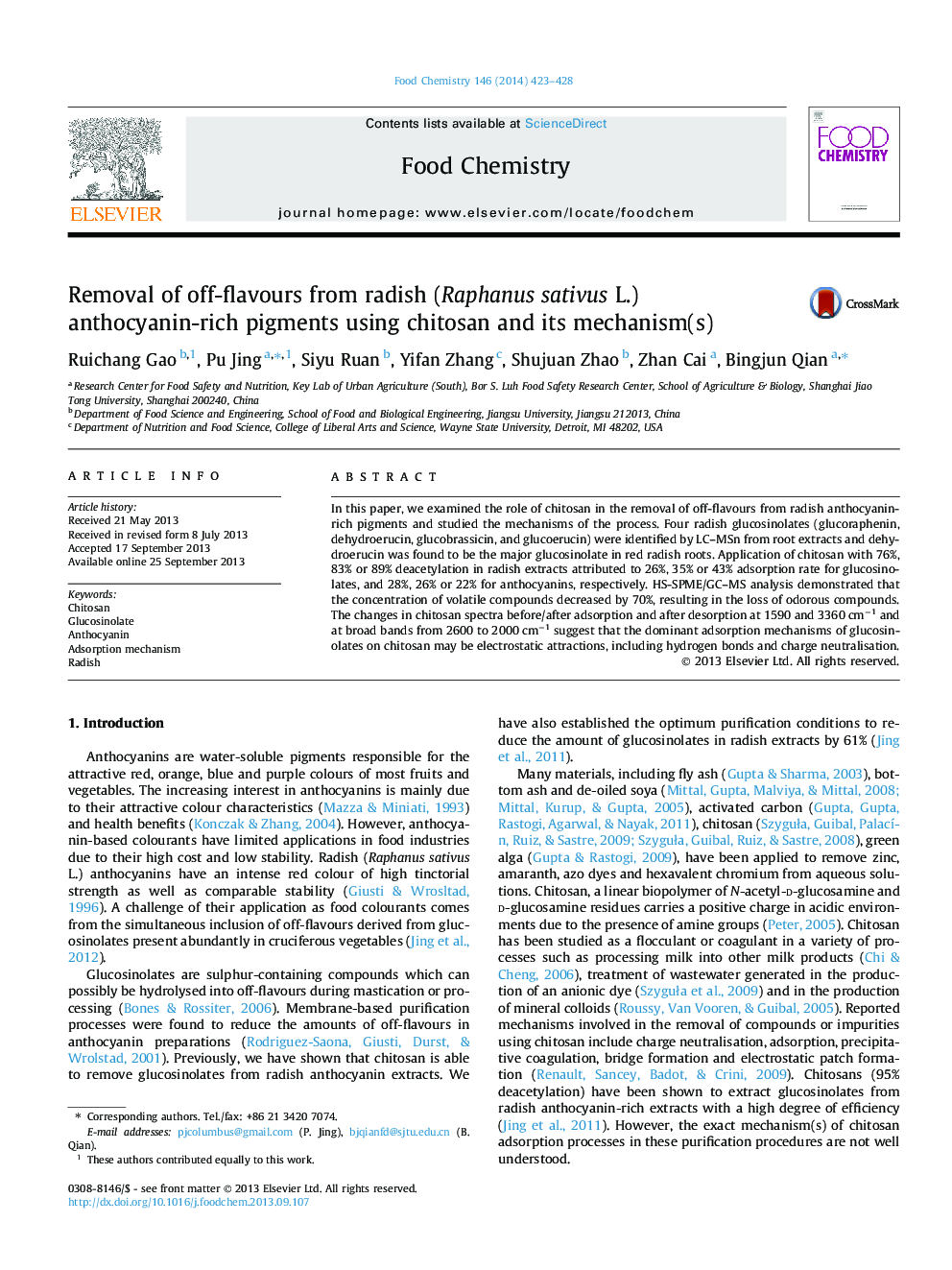| Article ID | Journal | Published Year | Pages | File Type |
|---|---|---|---|---|
| 7600014 | Food Chemistry | 2014 | 6 Pages |
Abstract
In this paper, we examined the role of chitosan in the removal of off-flavours from radish anthocyanin-rich pigments and studied the mechanisms of the process. Four radish glucosinolates (glucoraphenin, dehydroerucin, glucobrassicin, and glucoerucin) were identified by LC-MSn from root extracts and dehydroerucin was found to be the major glucosinolate in red radish roots. Application of chitosan with 76%, 83% or 89% deacetylation in radish extracts attributed to 26%, 35% or 43% adsorption rate for glucosinolates, and 28%, 26% or 22% for anthocyanins, respectively. HS-SPME/GC-MS analysis demonstrated that the concentration of volatile compounds decreased by 70%, resulting in the loss of odorous compounds. The changes in chitosan spectra before/after adsorption and after desorption at 1590 and 3360Â cmâ1 and at broad bands from 2600 to 2000Â cmâ1 suggest that the dominant adsorption mechanisms of glucosinolates on chitosan may be electrostatic attractions, including hydrogen bonds and charge neutralisation.
Related Topics
Physical Sciences and Engineering
Chemistry
Analytical Chemistry
Authors
Ruichang Gao, Pu Jing, Siyu Ruan, Yifan Zhang, Shujuan Zhao, Zhan Cai, Bingjun Qian,
